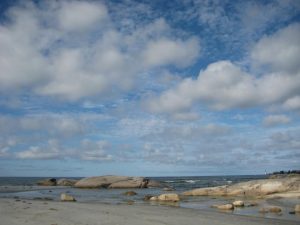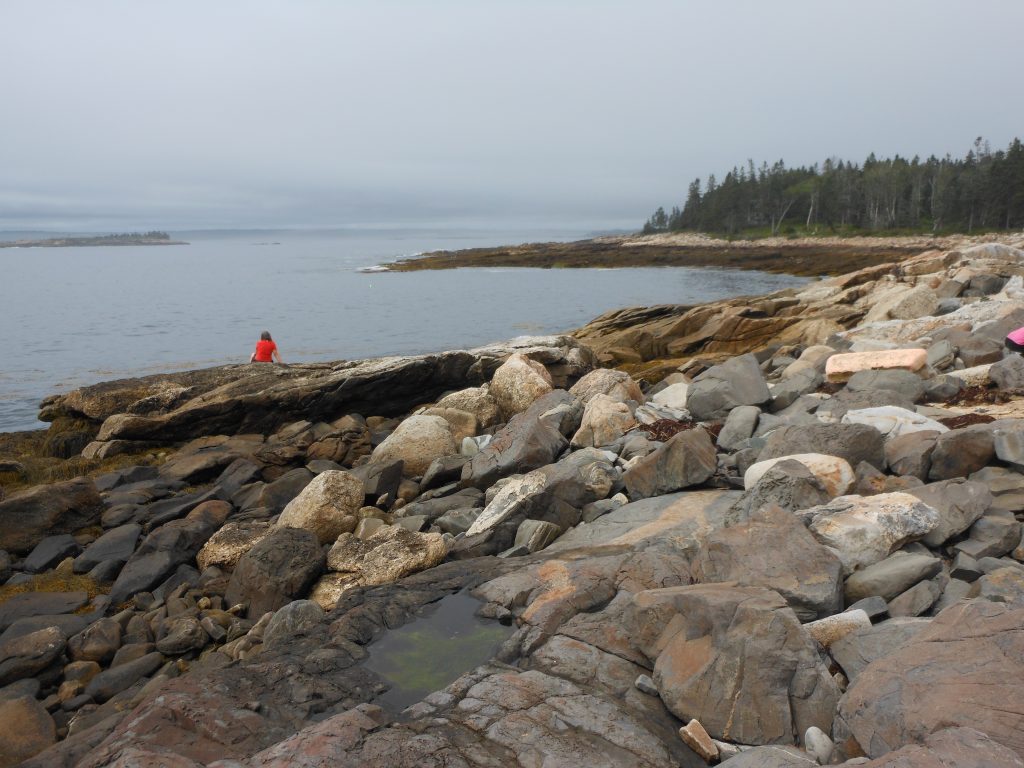 I stuck my toe in the water, and wow, it was cold. Ice cube cold. The hot August sun didn’t seem to be warming the frigid water at all. But no matter how cold, my twelve-year-old self was undeterred. I was going to jump in for a swim.
I stuck my toe in the water, and wow, it was cold. Ice cube cold. The hot August sun didn’t seem to be warming the frigid water at all. But no matter how cold, my twelve-year-old self was undeterred. I was going to jump in for a swim.
And I was not only planning on swimming, but snorkeling. I had dreamed of snorkeling ever since I had read a book called My Family and Other Animals by the British naturalist Gerald Durrell. In the book, he described the amazing underwater life of the ocean in words that fascinated me—changed my life, in fact. I yearned to have the experience that he had described so vividly in the pages of that book.
However, Mr. Durrell had done his underwater adventuring in the balmy waters of the Mediterranean. I was steeling myself to jump into the frigid, clear waters of the North Atlantic. A cheap mask and snorkel a friend gave me for my twelfth birthday had created the opportunity, and on this rare seaside vacation I knew I wasn’t going to waste it. I was going in.
As I took the plunge, the sudden grip of cold made me gasp. But then I opened my eyes and almost forgot the temperature in the wonder of the seaweed forest that spread below me. I was like a bird flying over the treetops, gazing down at the moving branches below—a forest of seaweed dancing to the rhythm of the ocean.
My breath echoed through the snorkel’s narrow tube: wooosh in, then wooooosh out. Little waves bounced me gently up and down. The cold was seeping into my skin, pinching my fingers. But the underwater forest was even more beautiful than I had imagined, filled with life and movement.
The sea bottom was pale sand, dotted with big chunks of granite. I peered at the rocks to spy little creatures clinging to the seaweed: barnacles, mussels, and spiny sea urchins like purple pincushions. Constellations of pink starfish were scattered across the rocks, while tiny gray snails called periwinkles slowly clambered up the fronds of rockweed. Across the sand scuttered a green crab. Then a flash of silver as a fleet of minnows darted past.
I could have stayed in this forest for hours, but my teeth were chattering. Time to get out and sit on a rock to warm up in the sun. As my toes slowly defrosted, I watched as seaweed forest did the most amazing thing—in slow motion, it folded itself up. 
Imagine a forest on land where the trees laid themselves flat on the ground every six hours, and then rose again. Seems too bizarre to be real—but that’s exactly what the seaweed forest does.
Every six hours, the tide changes. During the ebb tide, when the sea level lowers, the seaweed sinks lower and lower, too. Soon I could walk where just a short time ago I was swimming.
The shore at low tide has a weedy, fishy smell. It seems lifeless, nothing but sand and rocks covered with limp, brown weeds. But the forest is still filled with life. Lift up a wet handful of rockweed, and there they are: the periwinkles, the barnacles, the starfish, the little crabs, all protected against the dry, hot sun by their thick wet blanket. They wait till the water comes trickling back and it’s time for the seaweed forest to rise again.
Many years later, I was researching a difficult book on the topic of climate change. The more I researched the bewildering problems facing our planet, the more I kept bumping into an unlikely hero—seaweed. Turns out seaweed offers many possibilities for fighting climate change. It photosynthesizes like a plant, so it creates oxygen and removes immense amounts of carbon from the air. It filters pollution from seawater. And feeding it to cows hugely reduces the amount of methane they create. There seems to be no end to the wonders of seaweed.

photo by John Turnbull
I had never forgotten the magic of my long-ago trip into the seaweed forest. Putting that experience together with the challenges of climate change resulted in a book on seaweed called The Forest in the Sea: Seaweed Solutions to Planetary Problems. I hope that it will inspire young readers to have a sense of optimism and empowerment about the scary realities of climate change. And I hope it will motivate kids to do what I did—get outdoors, get in the water, wander a beach and experience the wonders of nature for themselves.
For me, this is the unending miracle of reading. An author’s experience creates a book, which creates an experience for a reader. The reader then writes a book about their experience, in the hope that it will light a spark in the mind of a new reader…and on and on. I can’t wait for the books that I hope my readers will write someday. I want to read about their adventures exploring the forest in the sea.
For more about seaweed, please check out my book The Forest in the Sea.






Your writing always inspires me!